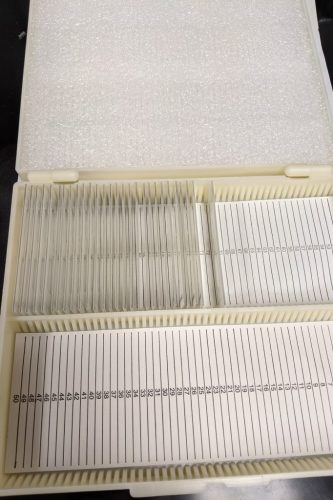When performing an Antimicrobial Textile Testing, it is important to have a reliable method to quickly estimate the amount of CFU´s in a solution. These are the two main devices that are usually used in this type of study for counting CFU´s:
HEMACYTOMETER
An Hemocytometer in a counting-chamber device that contains a gridded area to count the number of cells in a specific volume or liquid and, using this number, it is possible to estimate the overall concentration of the total original fluid. Hemocytometers are available in both reusable or disposable formats, and must be used with the appropriate microscope (usually containing a magnification of 100).
These are the instructions to perform bacterial counts using Nexcelom Disposable Hemacytometer:
INSTRUCTIONS
- Vortex the desired sample to measure (Sometimes, in order to get a sample that can be properly counted, dilutions need to be performed on the initial solution).
- Pipette 20 microliters of the sample into the hemacytometer.
- Place the hemacytometer under the microscope.
- Focus the microscope lens on both the grid and the cells.
- Count the total number of cells found in the 4 large corner squares
- Calculate the initial solution concentration using the following formula:
- Cell concentration = Dilution factor x (total count 4) x 104
- After finalizing the process, the disposable hemacytometer is properly discarded as a bio-waste.
SPECTROPHOTOMETER
A spectrophotometer is a device that can be used to measure the transmittance or reflectance of solutions. Using the device with the optical density set at 600 nm (OD600 mode) it is possible to measure the reduction in transmittance caused by scattering from the bacterial suspension.
These are the instructions to perform bacterial counts using Thermo Scientific™ SPECTRONIC™ 200 Spectrophotometer:
INSTRUCTIONS
- Perform the following dilutions on the desired bacterial solution to measure: 1/2, 1/4, 1/8, 1/16, 1/32, 1/64, 1/128.
- Turn on the Spectrophotometer and set it on the OD600 mode.
- Fill a cuvette with pure TSB, place it on the sample compartment and close the device´s lid to use that solution as the OD600 initial 0 value.
- Proceed to measure the pure solution by vortexing first, filling the cuvette, placing the cuvette on the sample compartment, closing the lid, and recording the OD600 value that appears on the screen.
- Repeat the previous step for each of the dilutions initially performed.
- The OD600 values obtained can be used with an online resource such as https://www.chem.agilent.com/store/biocalculators/calcODBacterial.jsp to estimate the concentration of the initial solution.
SPECIAL CONSIDERATIONS
- The bacterial solution that needs to be counted has to be properly mixed using a vortexer before taking a sample to count. This will increase the chances of having a representative sample.
- Sometimes, in order to get a sample that can be properly counted, dilutions need to be performed on the initial solution.
- It is recommended to run preliminary tests to evaluate the accuracy of the counting method used. This can be done by estimating the number of CFU´s using one of the above mentioned methods, and then performing serial dilutions and plating them to later compare the number of CFU´s that grow on the petri dish with the initial estimation made.
- Both the microscope and spectrophotometer count dead and live bacteria on a solution and, when counting bacteria for Antimicrobial Textile Testing, we are interested in estimating the number of live or viable bacteria. Preliminary tests showed that, in order to get more accurate CFU estimations, the Single Colony Growth has to be on the exponential growth face. This is usually achieved by selecting incubation times for the Single Colony Growth that are closer to the 18 hour period.


